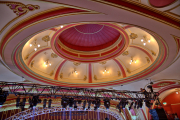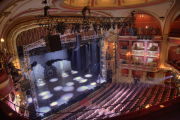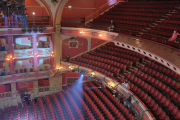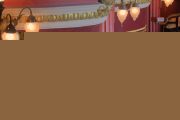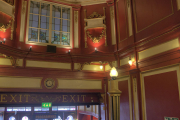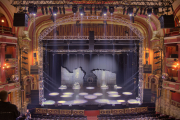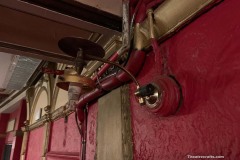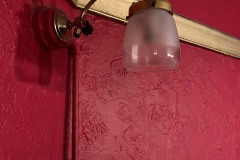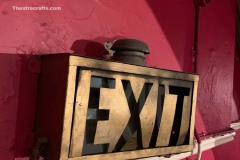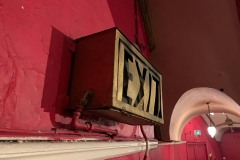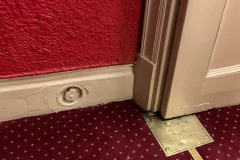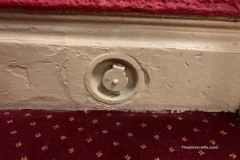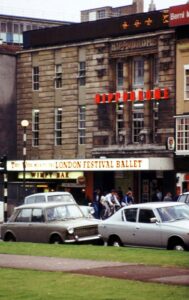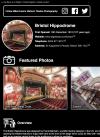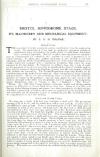Dates: 1912 – present
‘Bristol’s West End Theatre’
What’s On at the Bristol Hippodrome
Large and impressive venue, owned by the Ambassador Theatre Group (ATG)
History
The theatre was designed by Frank Matcham, and opened on 16 December 1912. It has been designated by English Heritage as a grade II listed building.
Tank
An important feature of the theatre when it opened was a huge water tank at the front of the stage; which could be filled with 100,000 gallons (450,000 litres) of water. The stage was split into two sections – the upstage part could lift up, and then the downstage part could be electrically driven to travel upstage, revealing the tank. The footlights were able to retract and be unplugged to remove any electrical danger. There was also a large protective glass screen which could be raised vertically in order to protect the orchestra and those in the stalls.
Dome
The auditorium also has a dome, which can be opened when necessary to ventilate; however since air conditioning has been installed it is rarely opened.
Gas Lighting
Gas fittings can still be seen in the auditorium, including emergency lighting and a beautiful example of a gas Exit sign, complete with ringing bell on house left side of the Upper Circle. The permanently-on emergency Gas lighting was in use in the auditorium aisles and exits as a secondary source of light if the mains electricity should fail, until it was upgraded in the 1990s (approximately) to a battery backed-up system.
Centralised Vacuum System
Around the auditorium and foyer areas, small metal flaps can be seen in the skirting boards. These previously connected to a central vacuum system to enable cleaners to plug-in in a number of areas to enable quick and efficient clean-up tasks.
Stage
The original raked stage was removed in the 2010s and was replaced with a flat stage to more easily accommodate large scale productions with automated scenery.
Exterior Electric Newscaster Sign (1966-1989)
Launched on 14 December 1966, the Newscaster was one of 4 in the country (Evening Post, 15 December 1966) and was operated by Inter City Newscasters Ltd. The others were in London, Manchester and Birmingham. The sign was initially to be used from one hour before dusk to midnight, although in later years it was used all day. It was removed in 1989 after the company that operated it went out of business. The news was supplied by the Bristol Evening Post and the Western Daily Press, and the installation cost in 1966 was £7000 (Evening Post 13 October 1966). The equipment was installed by Caines Brothers contractors (later Caines Construction Ltd) and was built by a Belgian firm, according to a news article of the time.
The sign was 17 metres long and 1.4m high, and consisted of a matrix of electric lamps. Towards the end of its’ life, many lamps failed. The technology is based on a thin card tape where the letters are punched out of the tape and travel over a continuous set of sensors which send the message to the matrix of lamps.
The sign featured in the opening sequence of the Shoestring TV detective show, which was filmed around Bristol.
See the Newscasters page for more information.
RESEARCH: A planning application in November 1988 proposed replacing an ‘obsolete electronic advertising sign’ with a new one (Evening Post, 30 November 1988). The planning application was not immediately granted, however, due to concerns about how the new sign, which would only be used for advertising, would appear. (Evening Post, 16 January 1989). The old matrix display sign became obsolete when the company that operated it went out of business. The Evening Post revealed (19 January 1989) that permission was not granted for a new 6m x 3m electronic sign to be used for advertising.
Fire
The theatre survived World War II, however less than three years after it ended on February 18th 1948, a fire destroyed the stage and backstage areas — luckily the auditorium was saved. The theatre reopened about 10 months later, and there have been no other disasters as severe.
The Bristol Hippodrome Today
Previously owned by the Stoll Moss group, the venue is currently owned by the Ambassadors Theatre Group (ATG).
The theatre now plays host to touring versions of many top shows, such as Lion King, Phantom of the Opera, We Will Rock You, Miss Saigon, Cats, Les Misérables, and Blood Brothers. This is due to the size of its stage, which is one of the largest outside of London. In addition to large musicals it is also a venue for opera, ballet, childrens’ shows, drama, stand-up comedy, and an annual pantomime.
The Bristol Hippodrome has strong links with many shows that frequently appear there, such as the Welsh National Opera.
In 2012 the theatre celebrated its centenary with a show called Thanks for the Memories, staged by amateur groups Bristol Light Opera Club and Bristol Musical Youth Productions.
Equipment
1971 (from The Stage Guide)
Electrics: Strand Grand Master board on SR perch. Dimmers – 95 (1kW to 3kW). Circuits – FOH 11 (Circle Front and Boxes); Flies 14; Stage dips 20. Socket type – 25A Strand and 15A BESA. Total capacity available – 700A on 3 phases. Special effects supply – 250A on 3 phases. Follow spots – in rear of Gallery, 3 sunspots. Footlights cannot be covered.
Sound: Console SR. 2 x 20W amplifiers. Tape decks – 1. Turntables – none. Mic sockets – 6 (Cannon). Loudspeakers – 4 on pros. wall.
The Grand Master control desk was in operation until 1980.
The Theatres Trust
Bristol Hippodrome on the Theatres Trust Database
Links to information about equipment at Bristol Hippodrome over the years
Documents

Bristol Hippodrome: In A New Light (Houselight system) (December 2017)
[955kb PDF]
From Lighting & Sound International

An Unusual way to increase seating capacity at the Bristol Hippodrome (February 2018)
[External Website]

